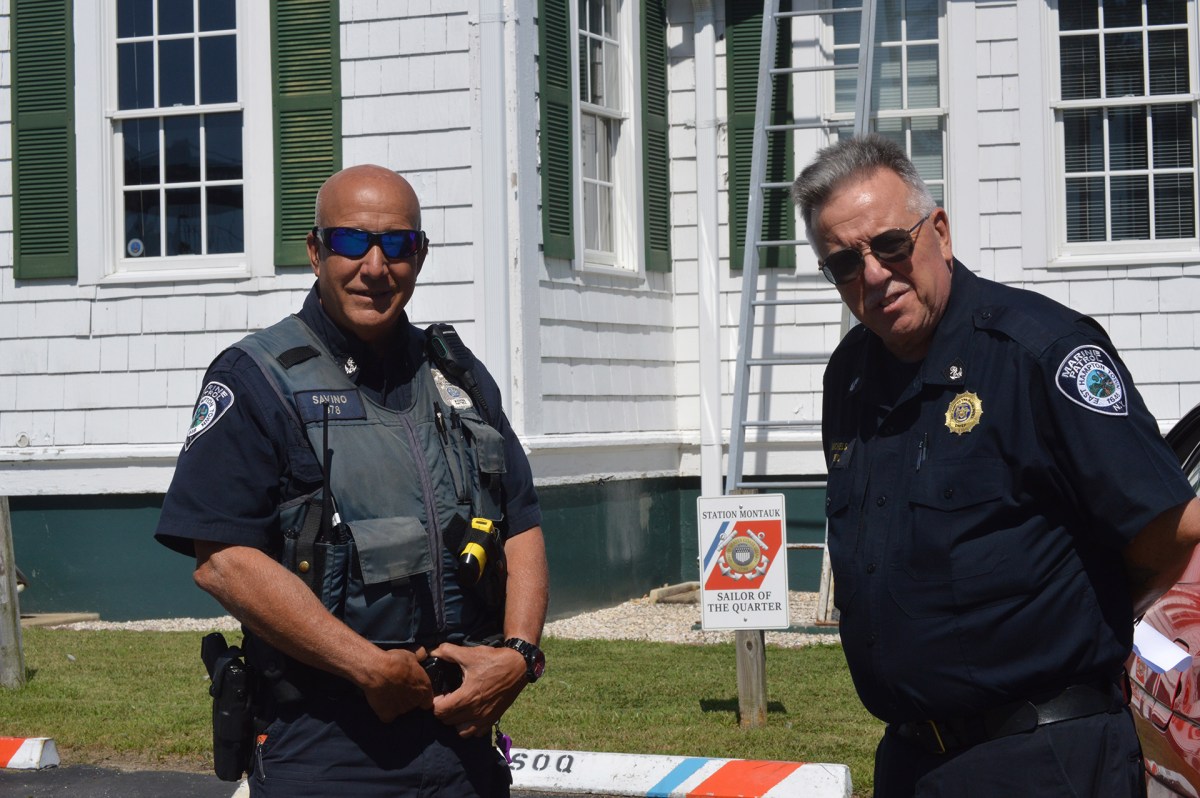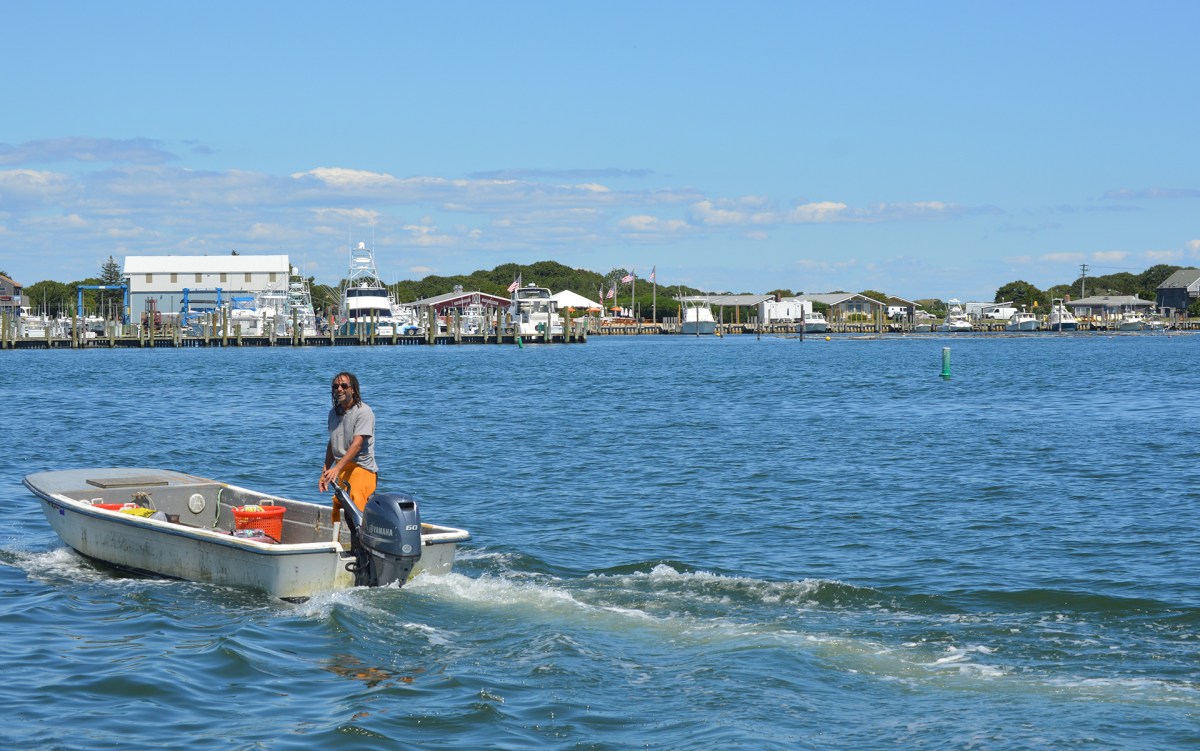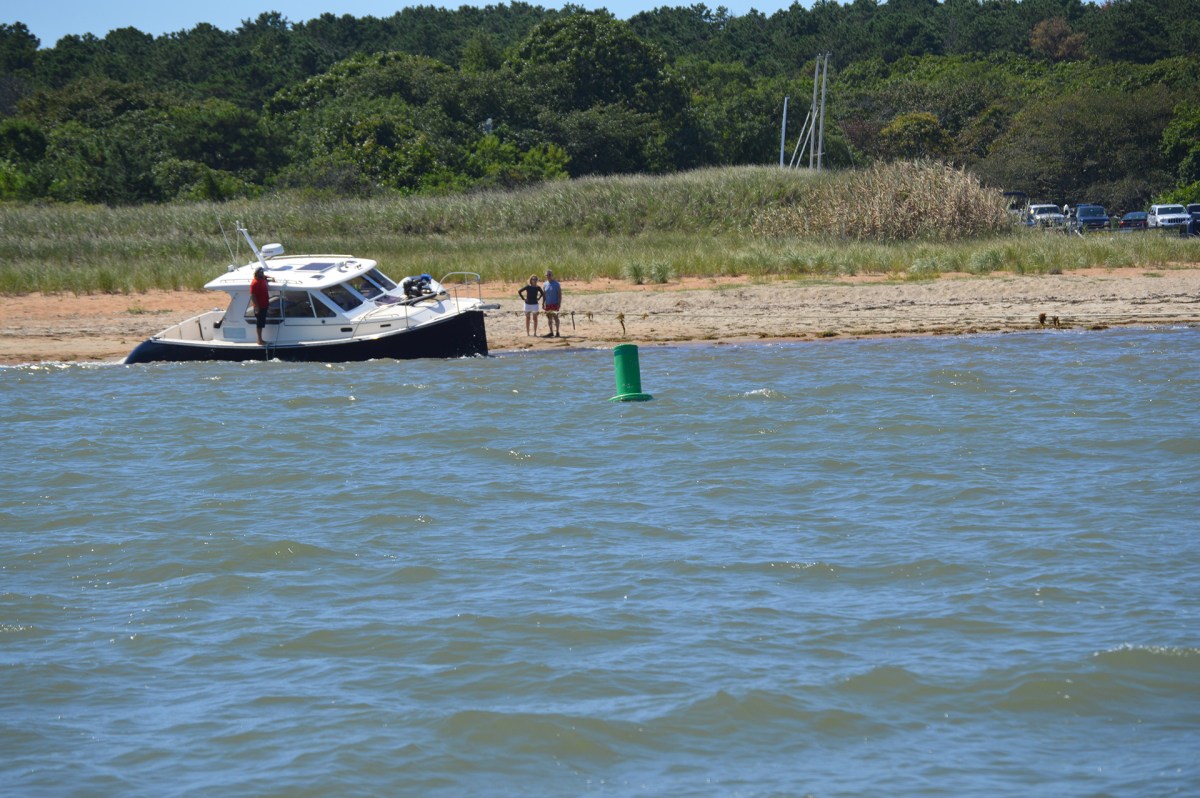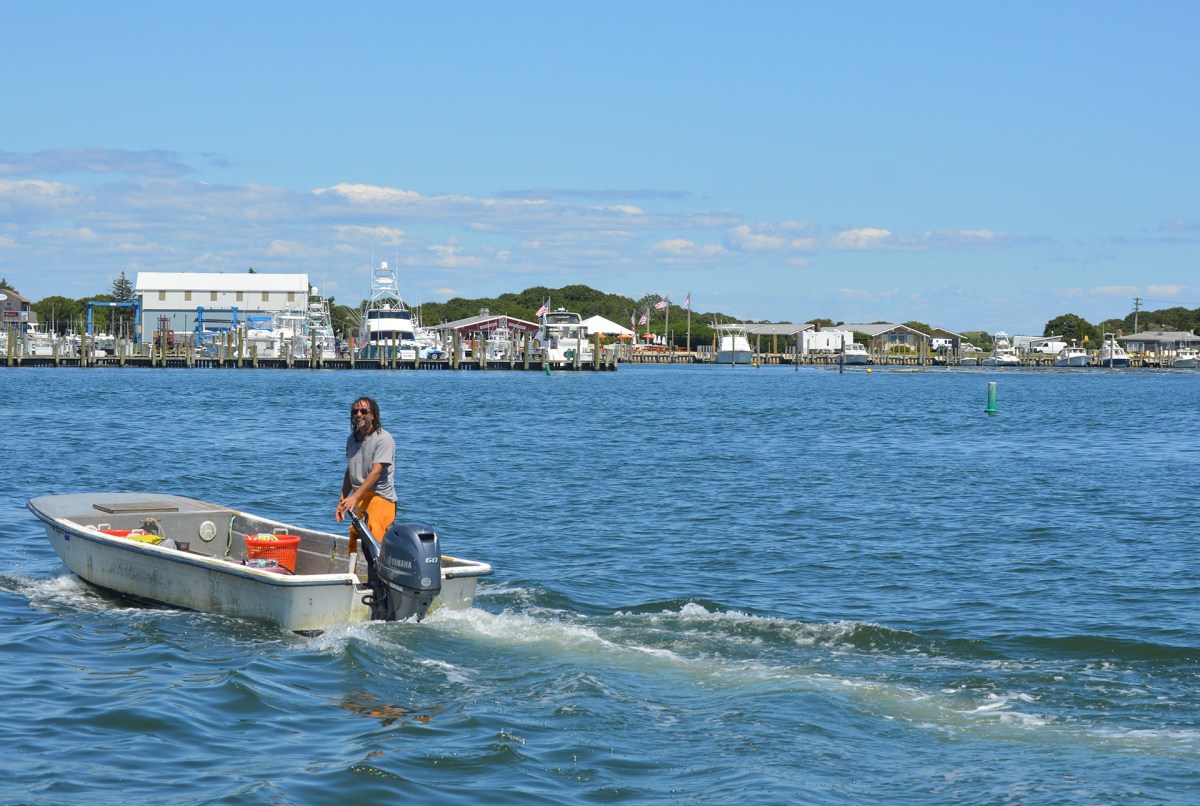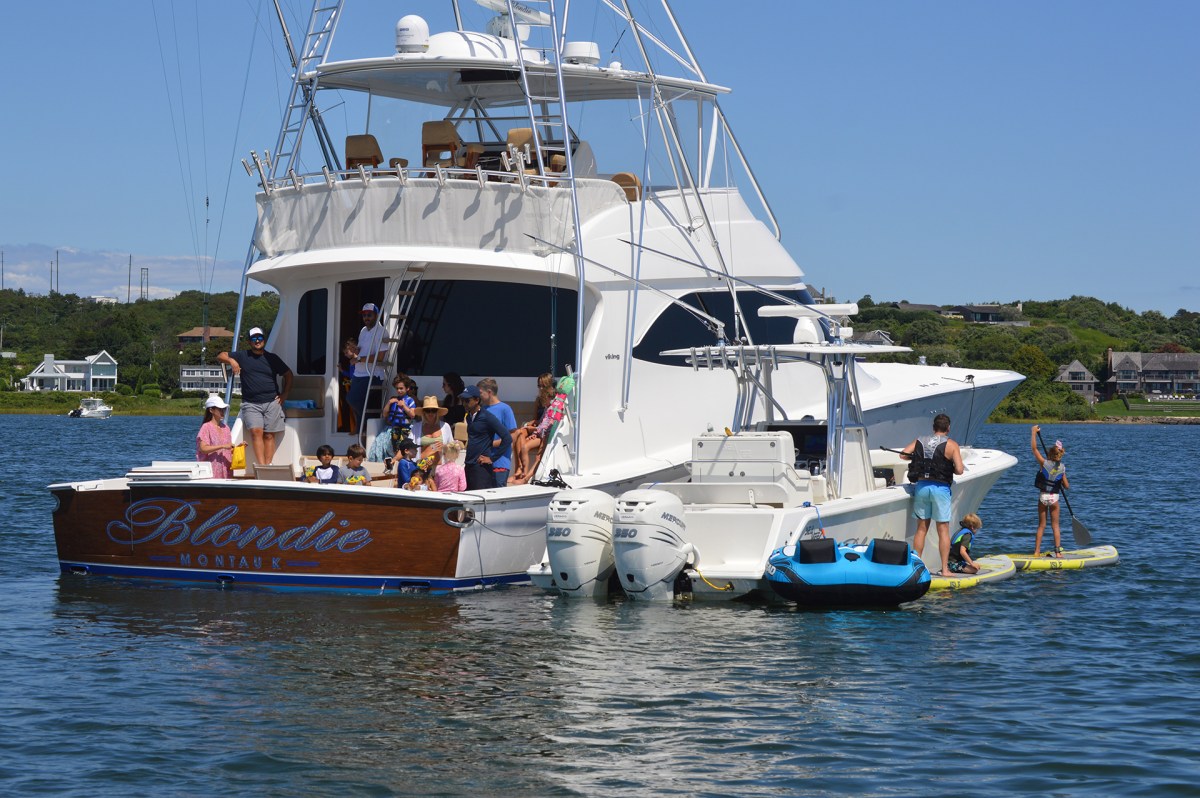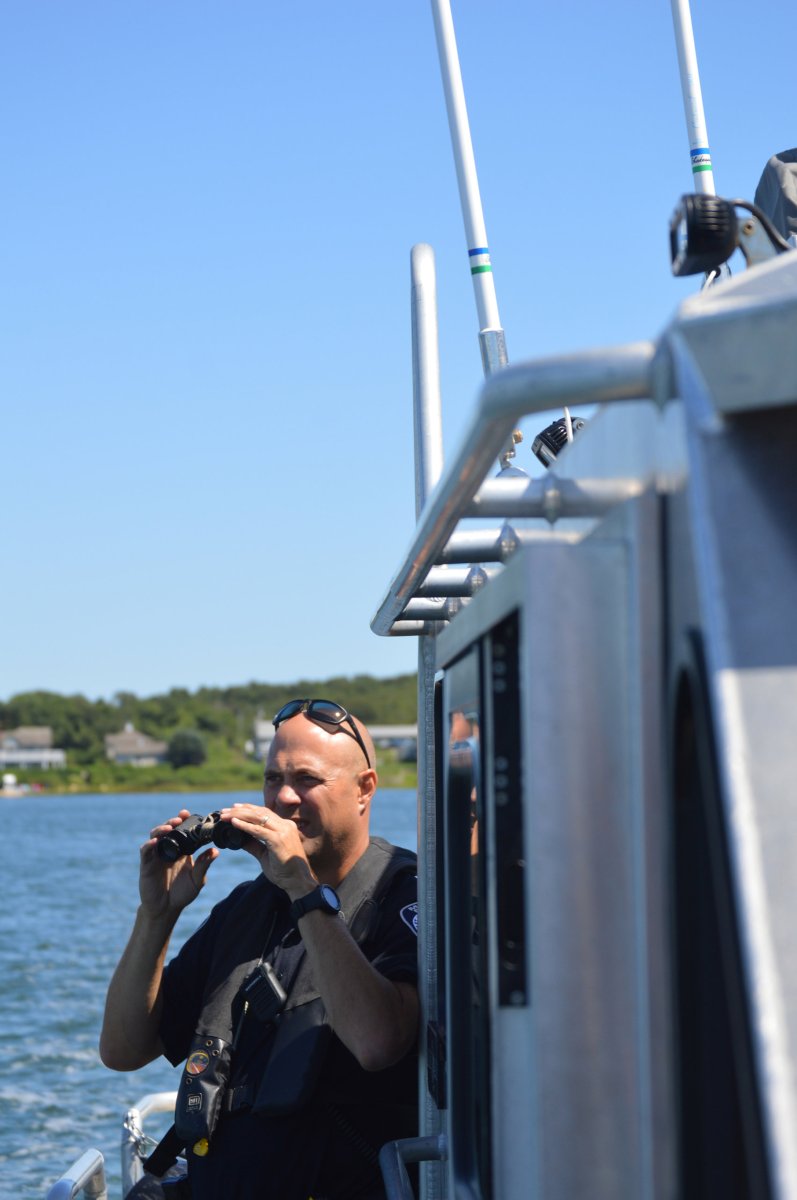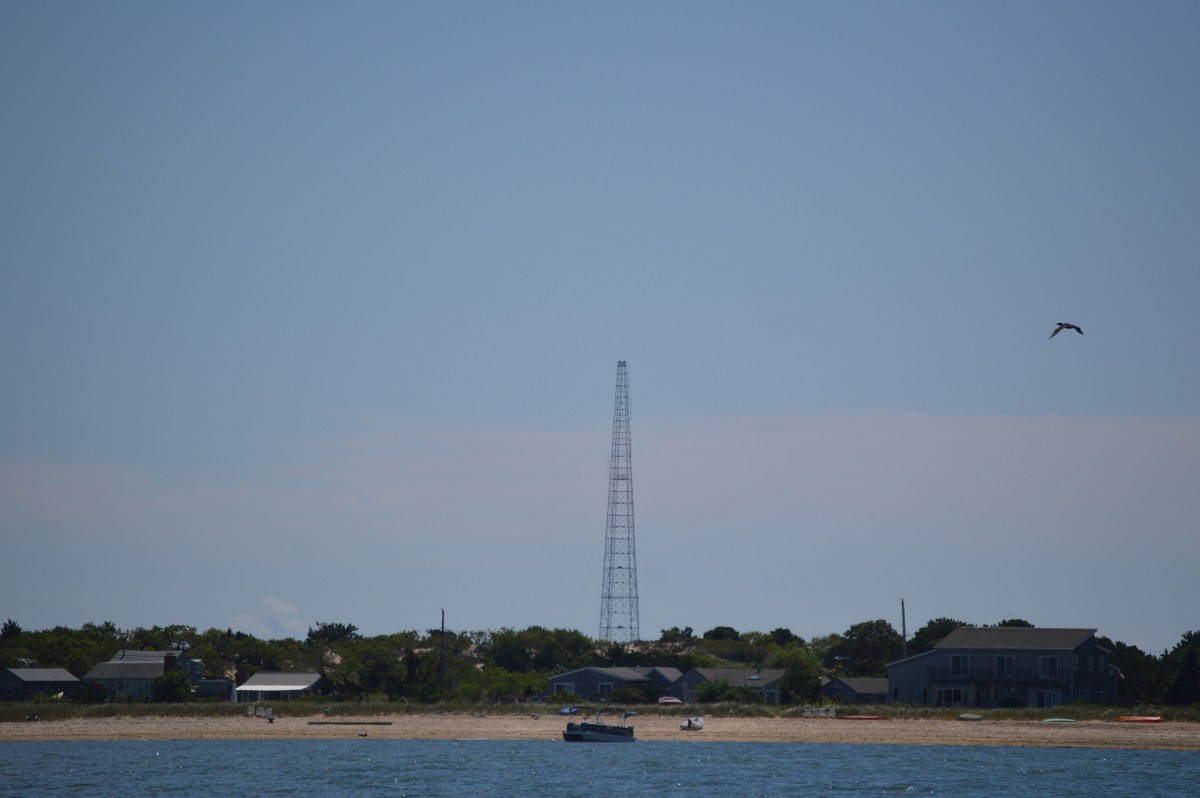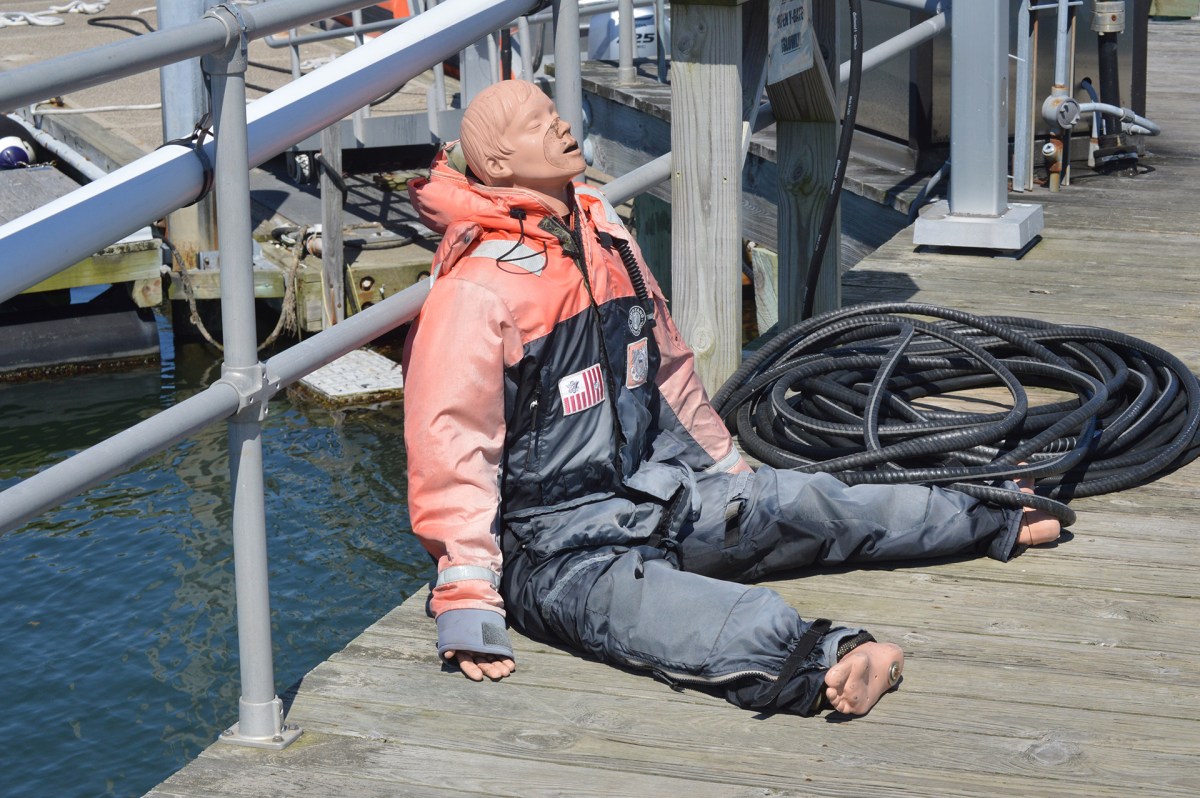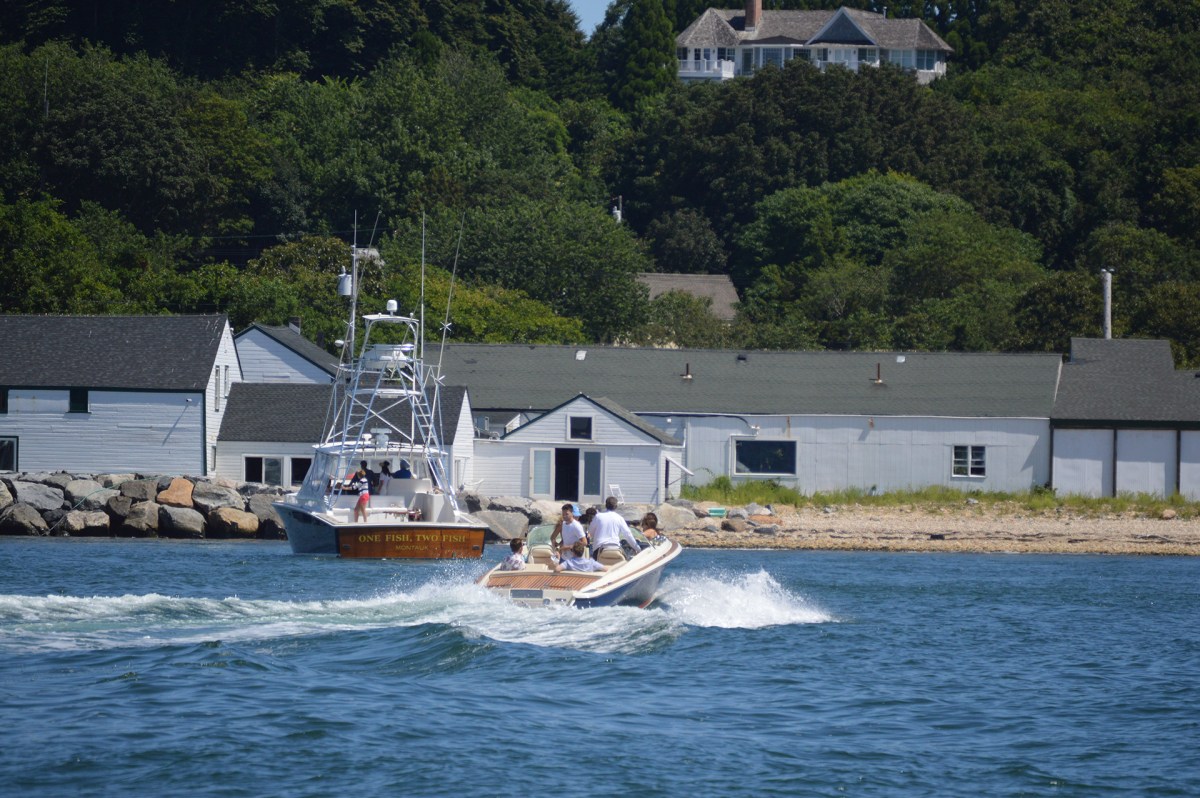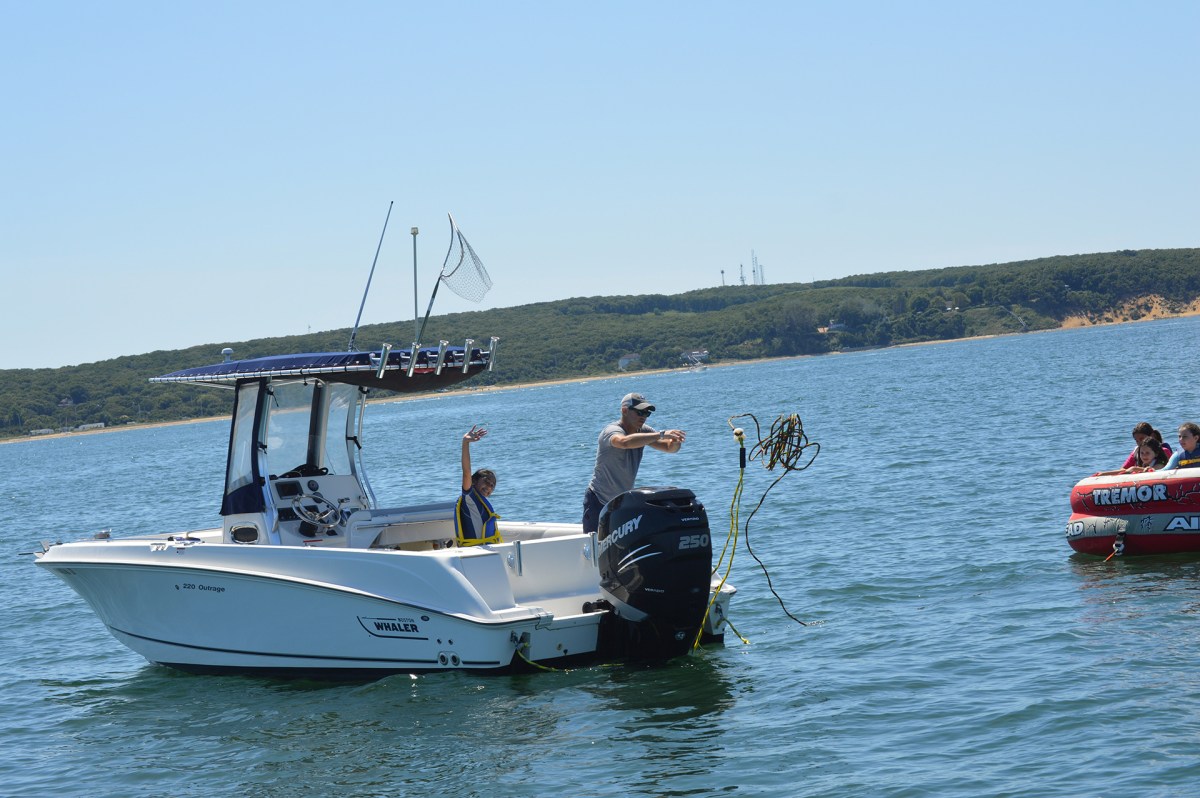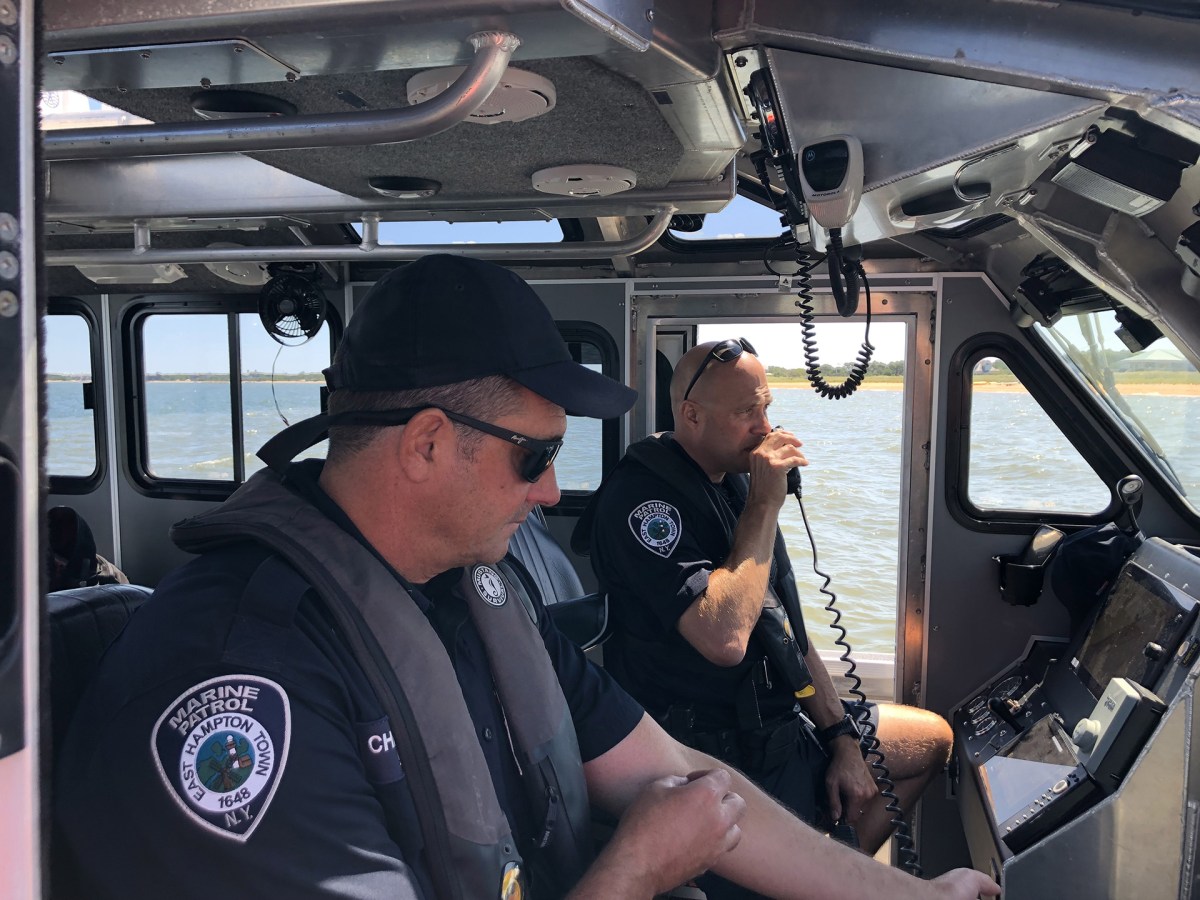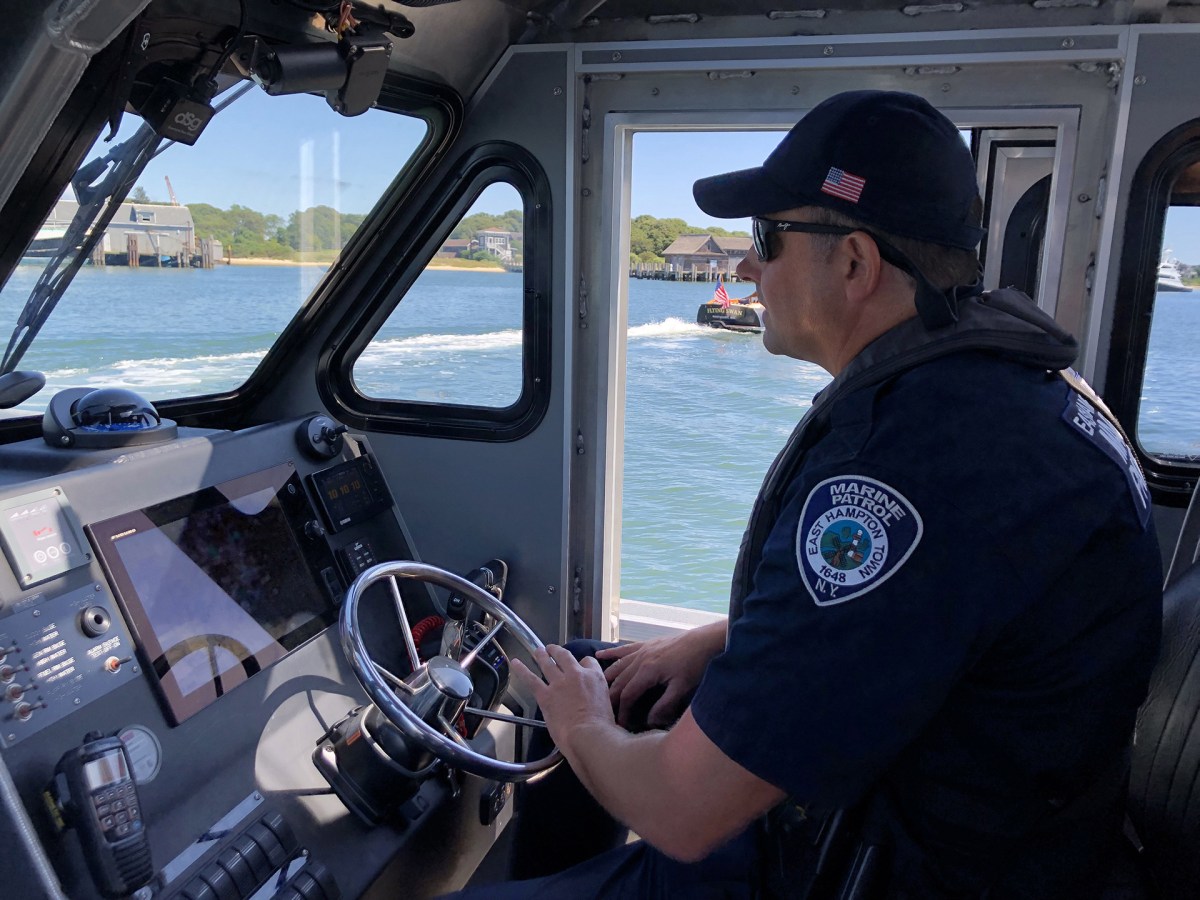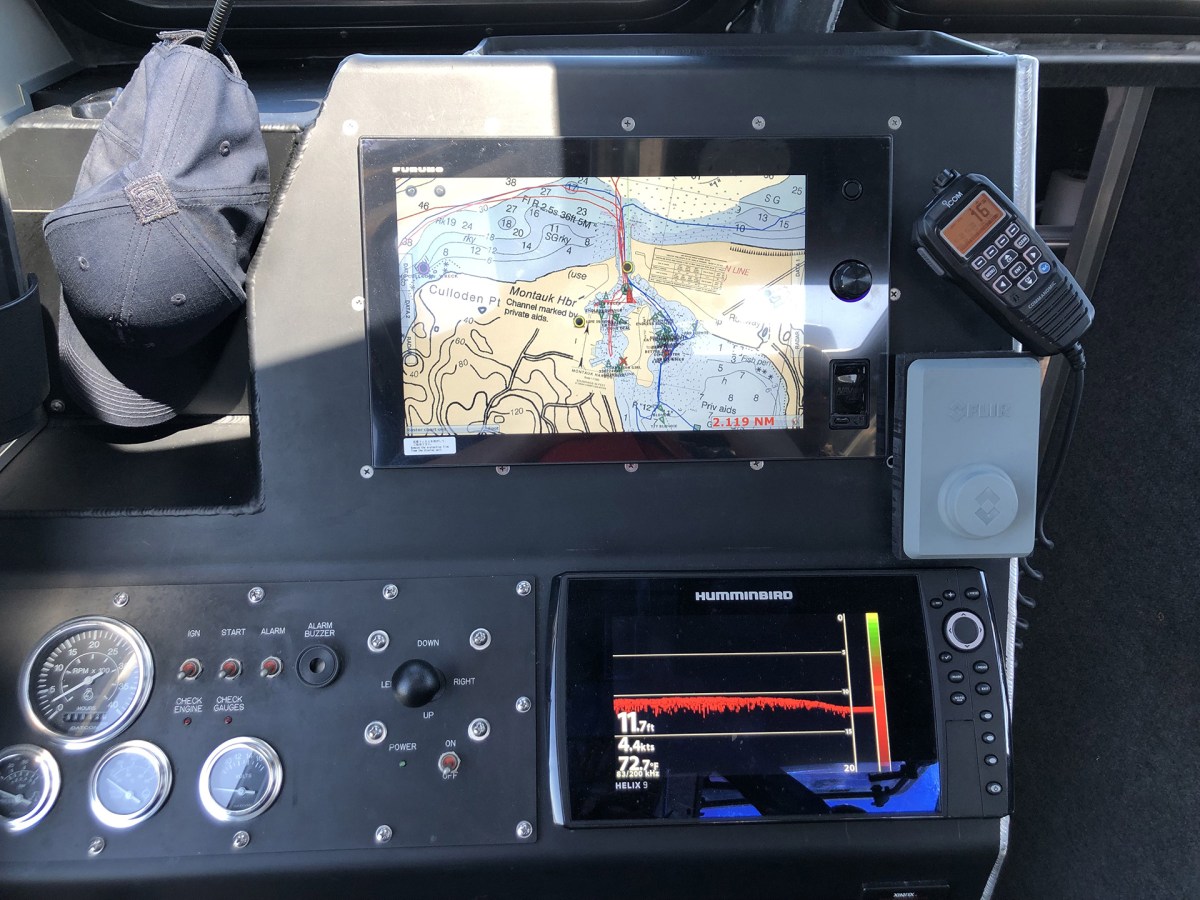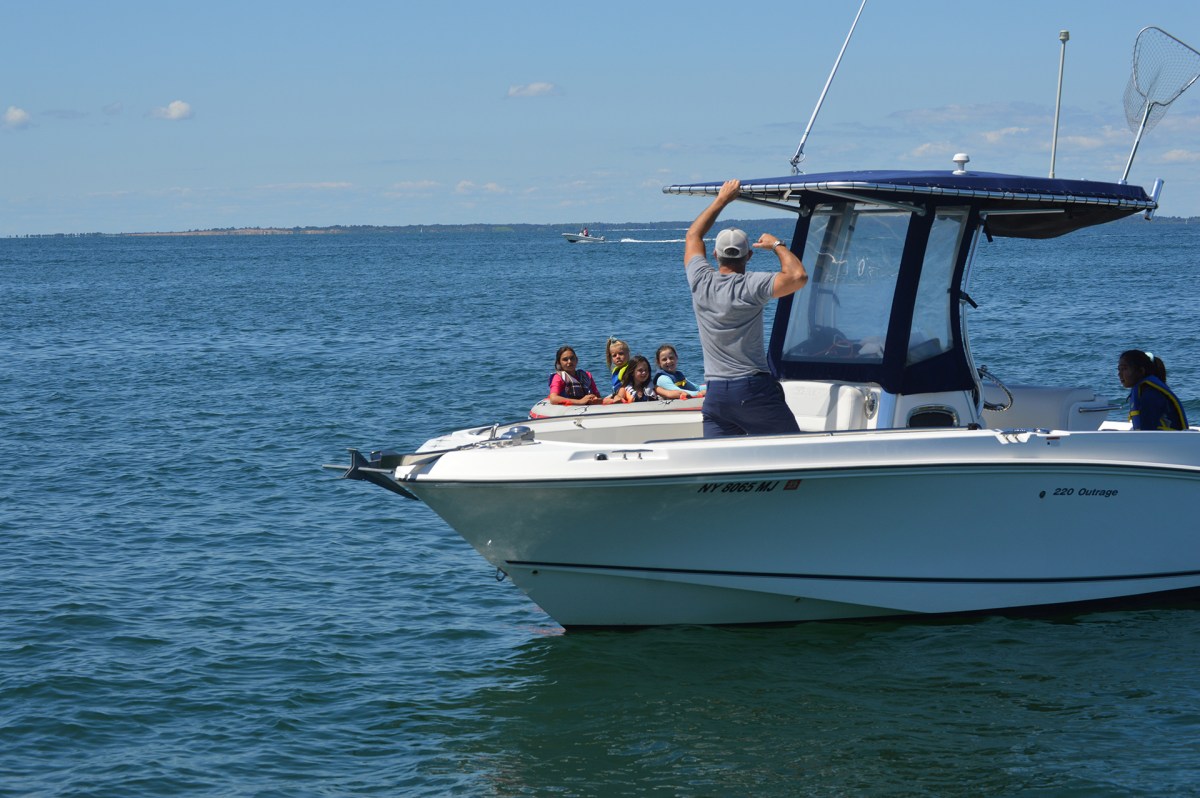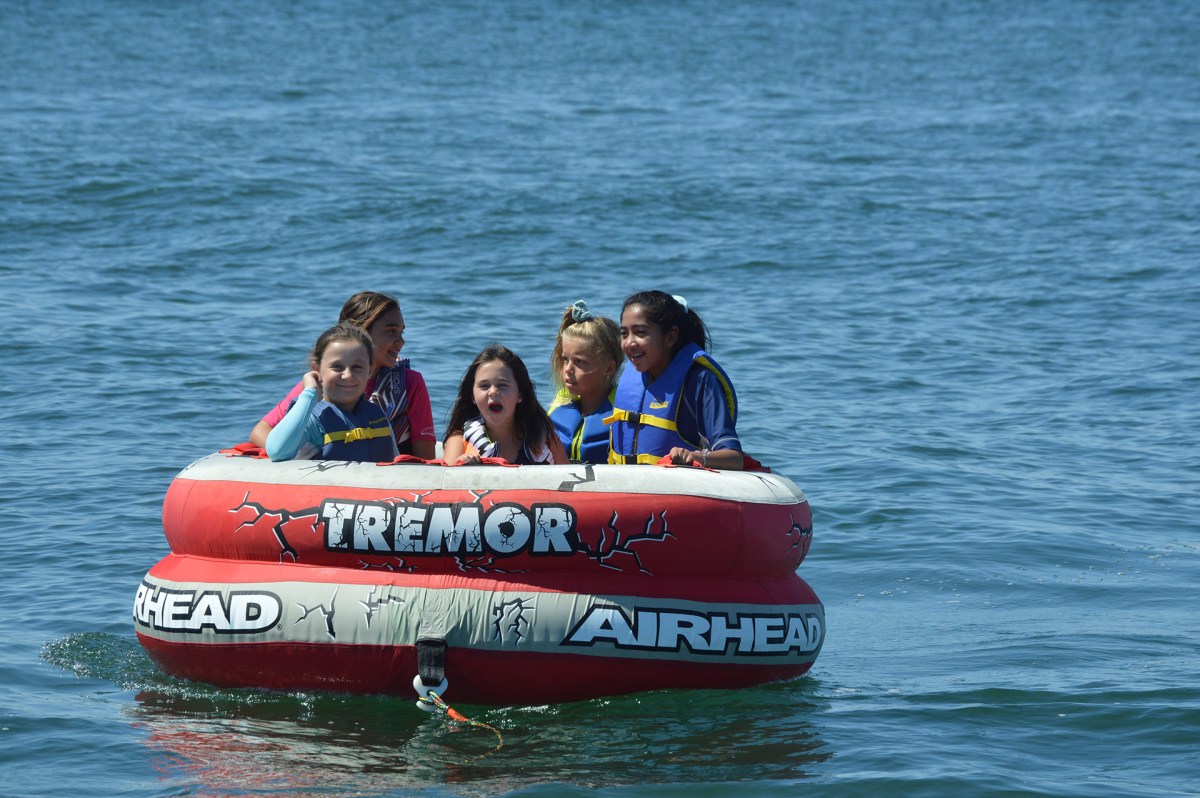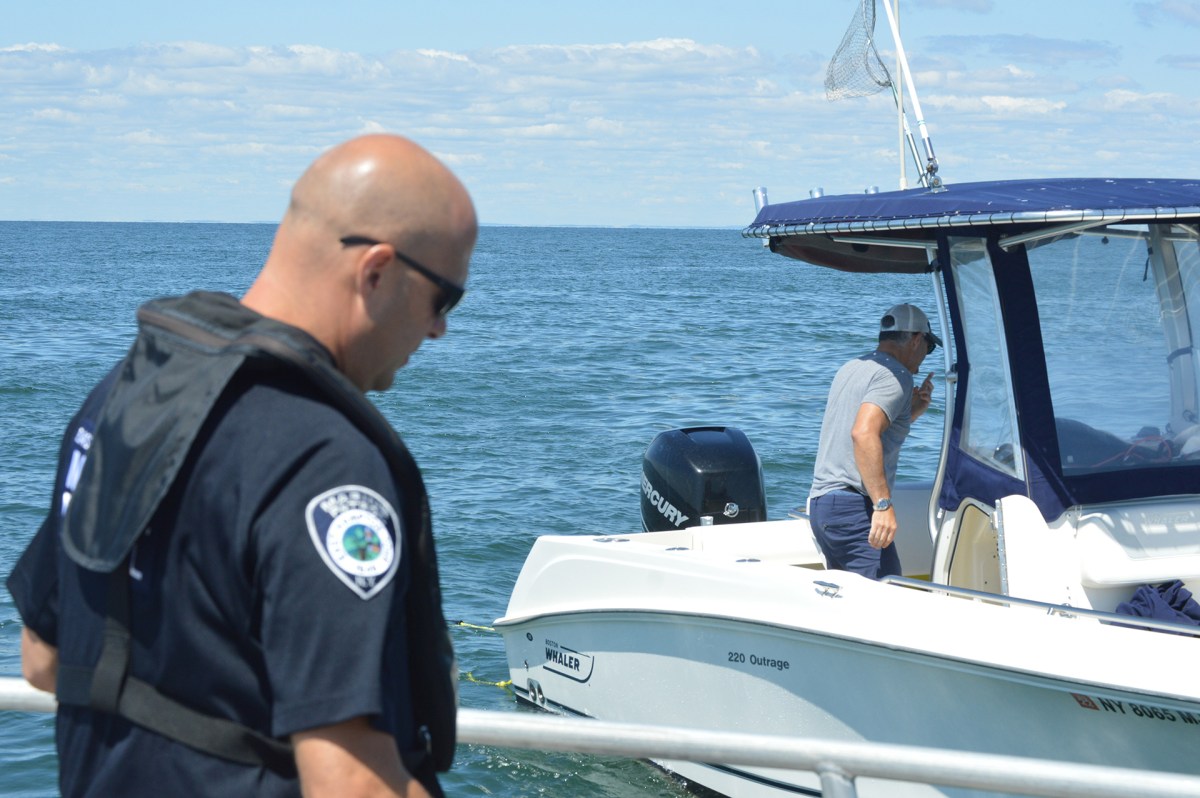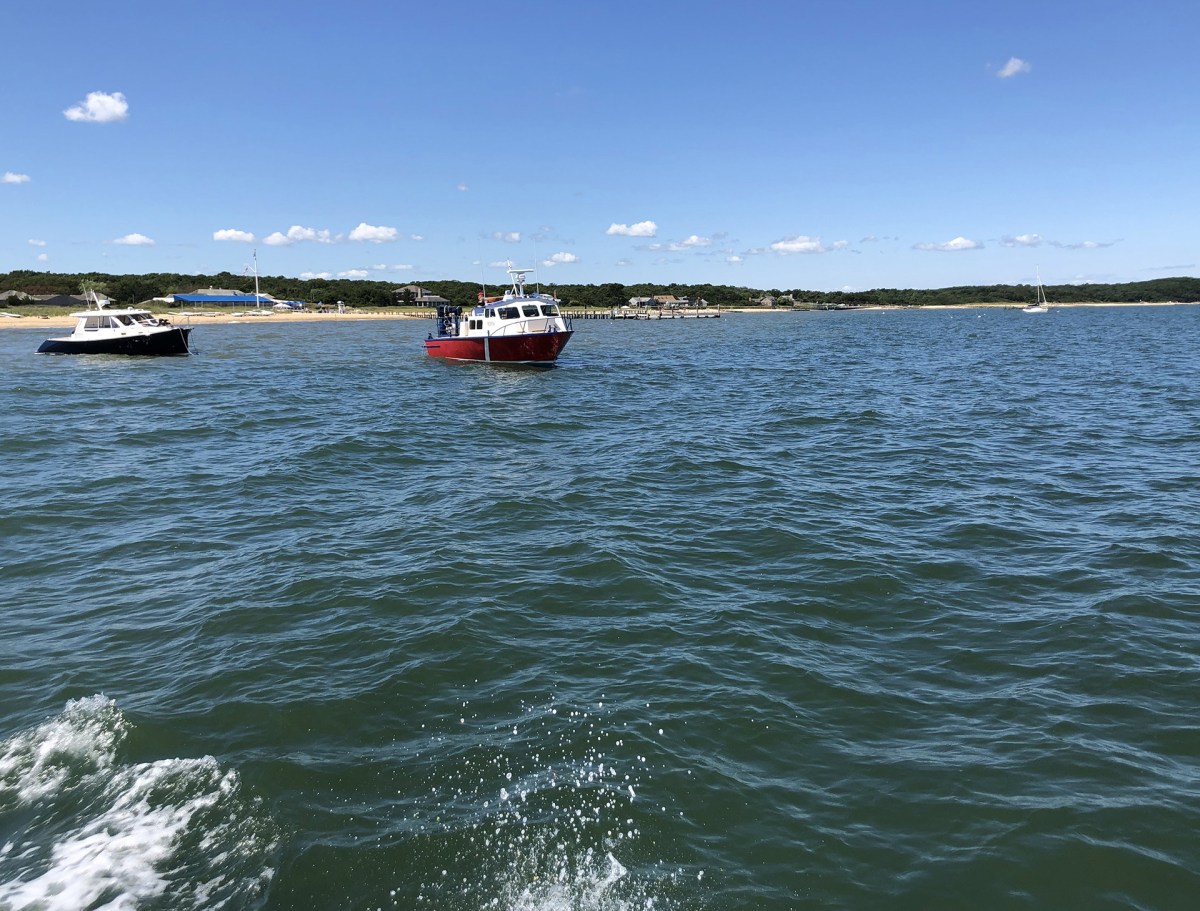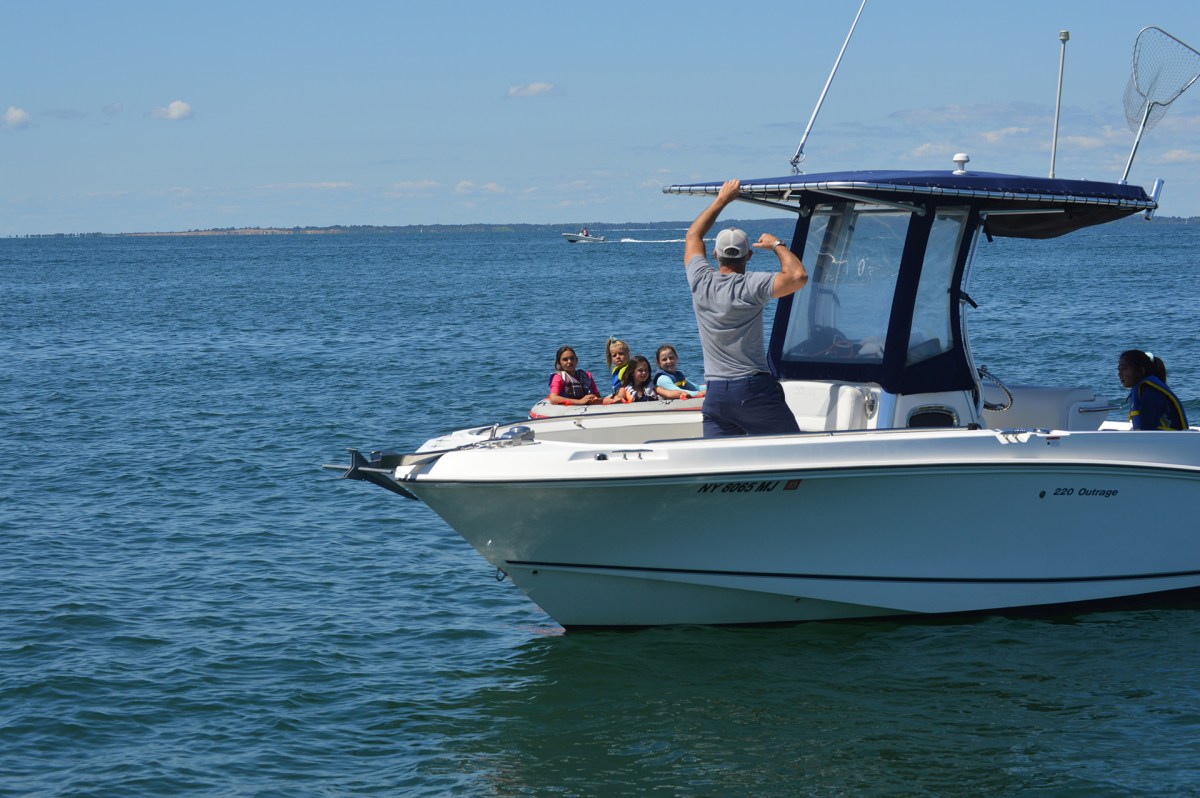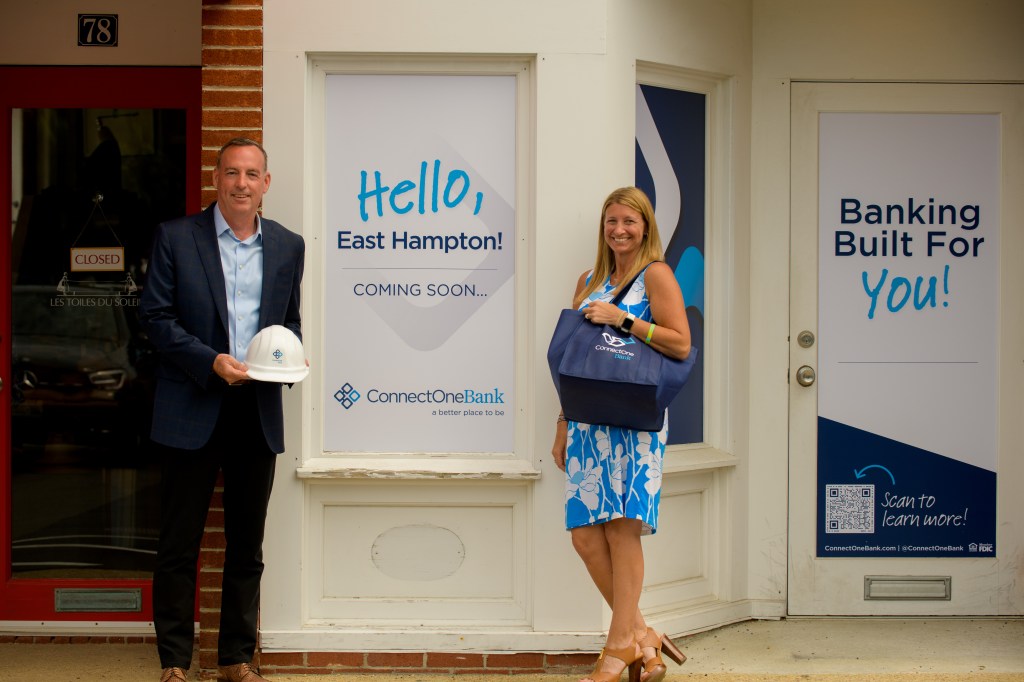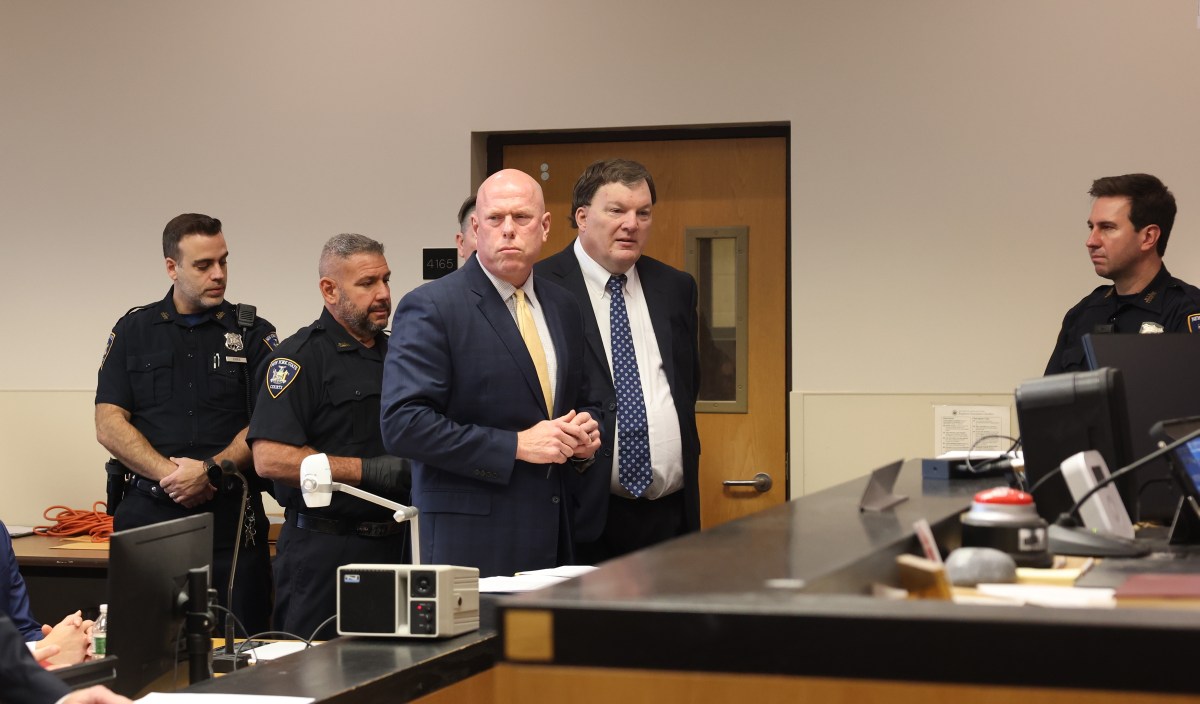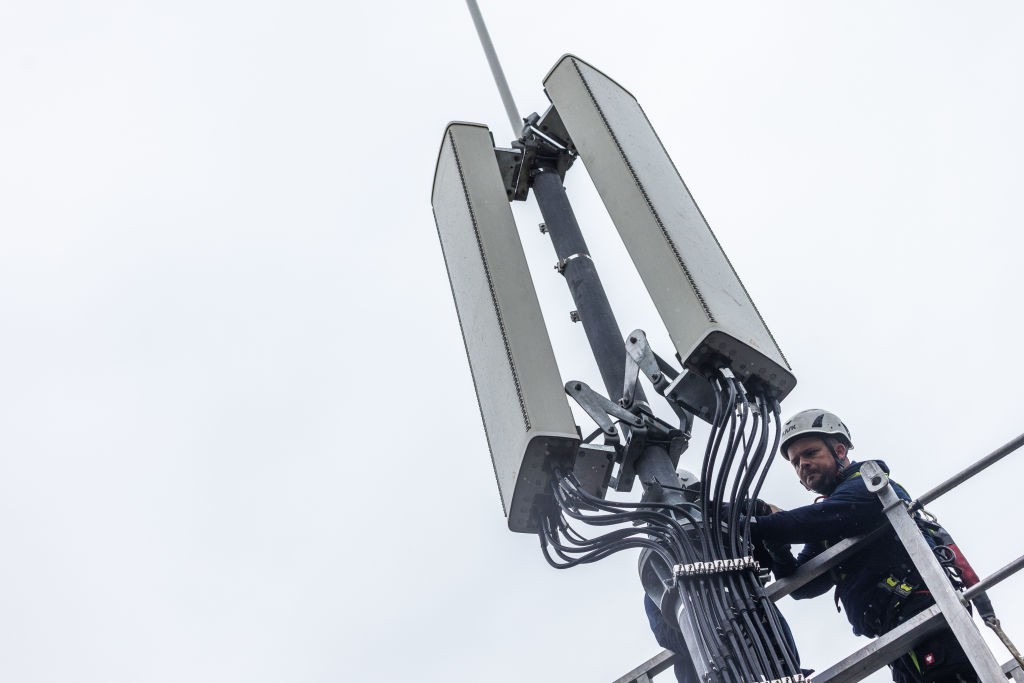Watching The Waters Of East Hampton
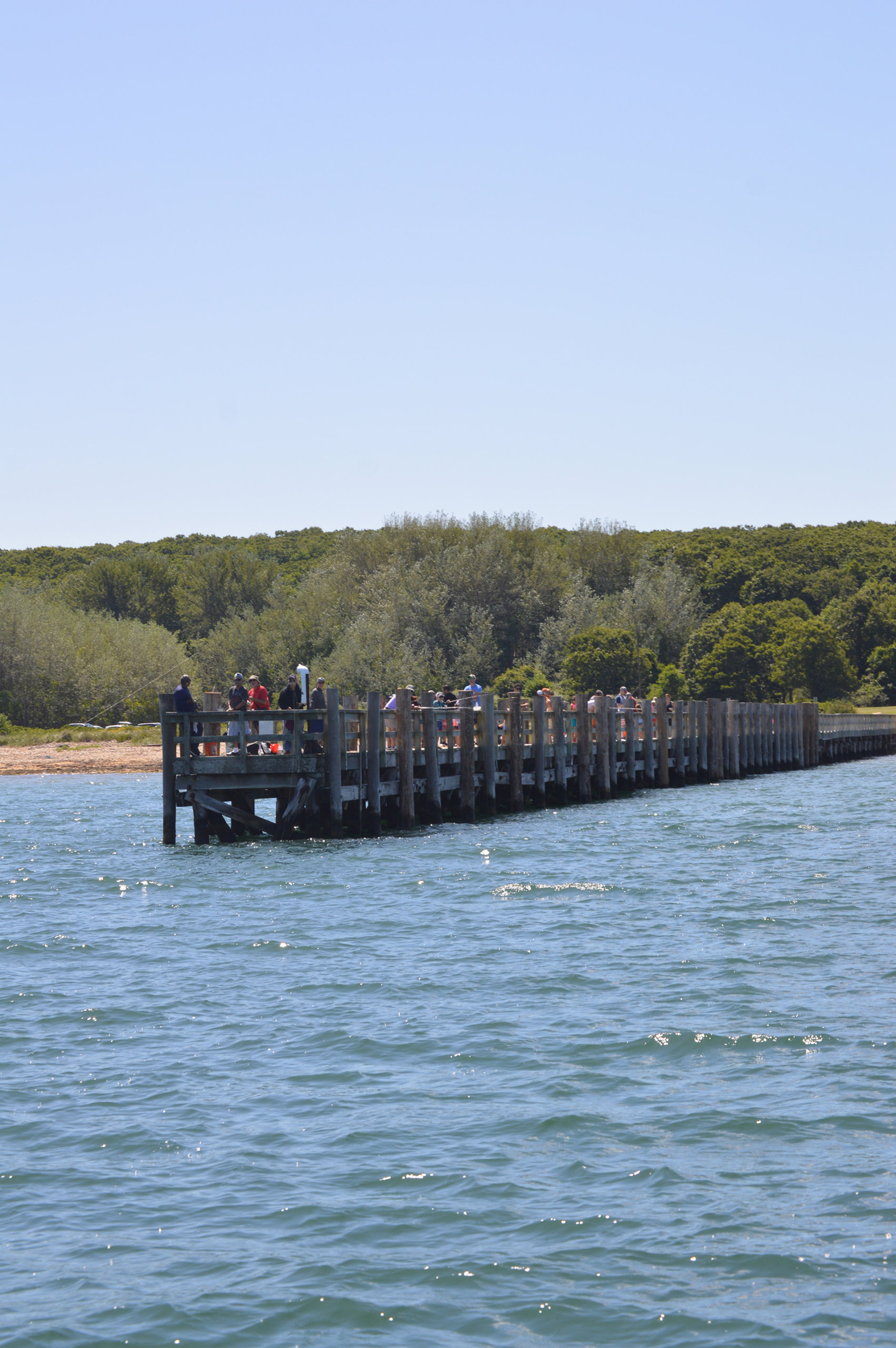
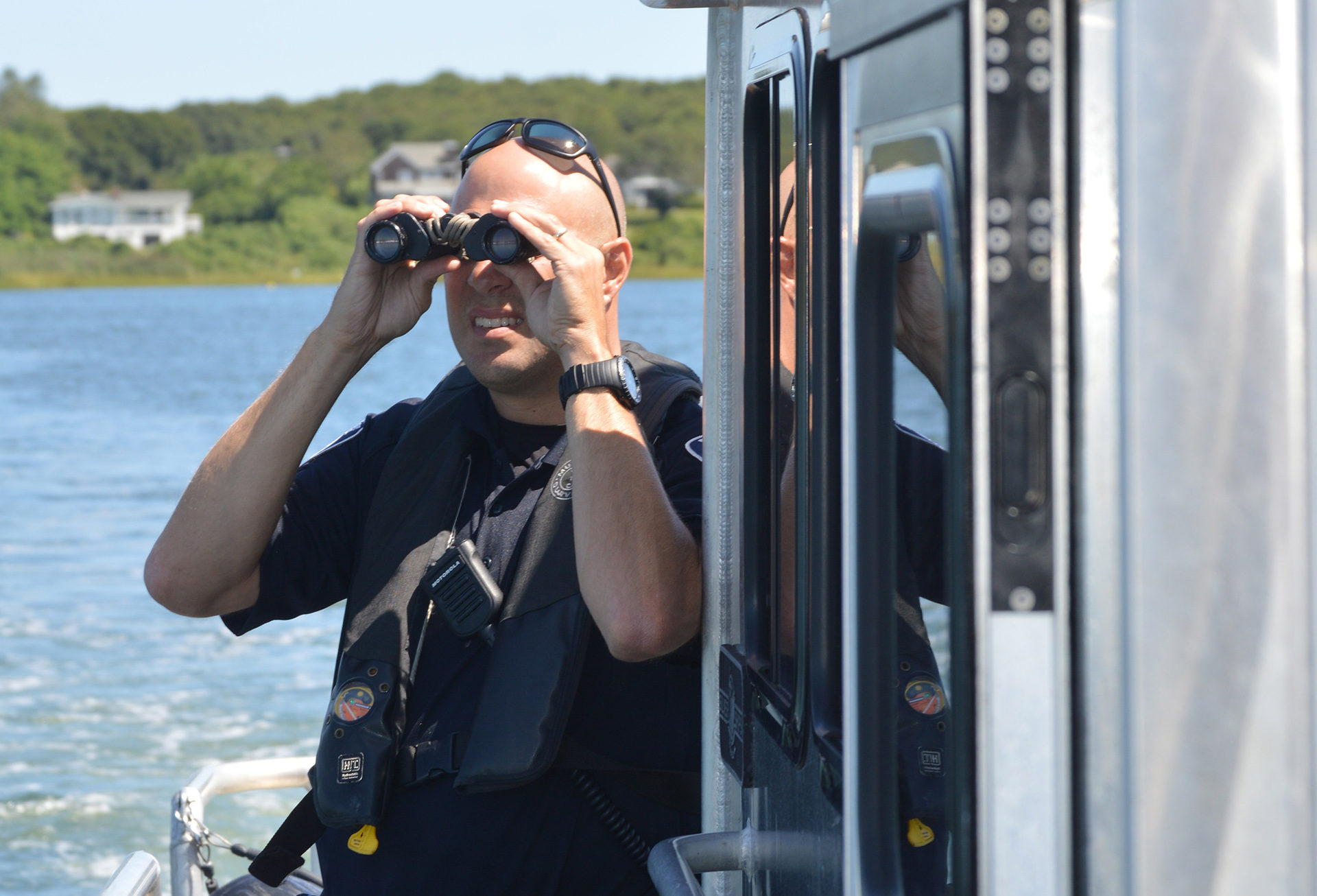
They write tickets, make arrests, and are first responders in case of emergency, just like any other police officer in East Hampton, but the harbormasters’ authority is on sea, not land.
On Saturday, August 24, harbormasters Matt Zukosky and Jay Sharron took the 43-foot-long state-of-the-art patrol vessel the John L. Behan out of the dock at the Coast Guard station on Star Island, and went on a routine patrol. Over the next few hours, they monitored a Connecticut vessel being towed off the beach that had gone aground the night before near Devon Yacht Club in Amagansett, and stopped a few boaters violating the rules of the watery road.
The boat is a new acquisition for the town, made possible by a grant from the U.S. Department of Homeland Security. The John L. Behan is named for the former New York State Assemblyman from Montauk.
“It’s the crème de la crème,” Zukosky said. It is versatile craft. The cabin can be sealed from outside air, allowing the boat to fight otherwise toxic fires with a robotically-controlled water cannon. The Montauk Fire Department have personnel trained to use the vessel for fire-fighting in Montauk Harbor.
After the plane crash that claimed the lives of Ben and Bonnie Krupinski, and their grandson, William Maerov, along with pilot Jon Dollard, the John L. Behan served as the dive platform for the East Hampton Town police dive team, Zukosky said.
On the beach by Devon Yacht Club, a salvage boat had tied a tow line to the vessel, slowly pulling it back into Gardiner’s Bay. The boat had taken on water early that morning, forcing the pilot, who had his wife on board, to put the boat close to the beach, with the wind and current doing the rest.
“It got very windy, very choppy, so the stern of the boat started taking on water,” Zukosky said, adding the driver was a seasoned boater. “He recognized that, and tried to get it close to shore so it wouldn’t sink.”
With that situation under control, they headed back across Gardiner’s Bay before Zukosky spotted a group of paddleboarders and kayakers.
“It looks like one guy may not have a life jacket,” Zukosky said, before adding that if a personal flotation device is on the board or in the vessel, it doesn’t have to be worn. On the other hand, if a paddleboarder doesn’t have the proper equipment, harbor patrol can terminate his or her voyage.
When they returned to the Coast Guard station, Chief Harbormaster Ed Michels hopped onboard. Michels has organized the harbor patrol to enable it to work with 16 other departments across the East End in a marine task force, to step in where help is needed. He spoke about “the ocean rescue that started out with a bunch of off-duty lifeguards, and has turned into an agency that the state is getting ready to recognize. Every time we get a plane crash, they are right there with me.”
A particular concern for Michels is pollution.
“Every time we board a boat, we check the head,” Michels said. “We lose our water, we don’t have any place else to go.”
Michels has been on the job for 40 years. He is originally from Astoria. He joined the Coast Guard in 1973 and was first sent to Boston.
“I came out here in 1986,” Michels said. He was chief on the cutter Point Wells, the Coast Guard’s rescue boat at the time, which has since been replaced by the Bonito, for three years, then became chief of the base for another three years, before making the career move to harbor patrol. He became chief harbormaster in 1999.
Michels also stresses keeping drunk boaters off the waters. This is the first year in a while that Marine Patrol hasn’t made a boating while intoxicated arrest. He supports legislation introduced by Assemblyman Fred Thiele that would make boating while intoxicated a felony if there are children aboard.
t.e@indyeastend.com

